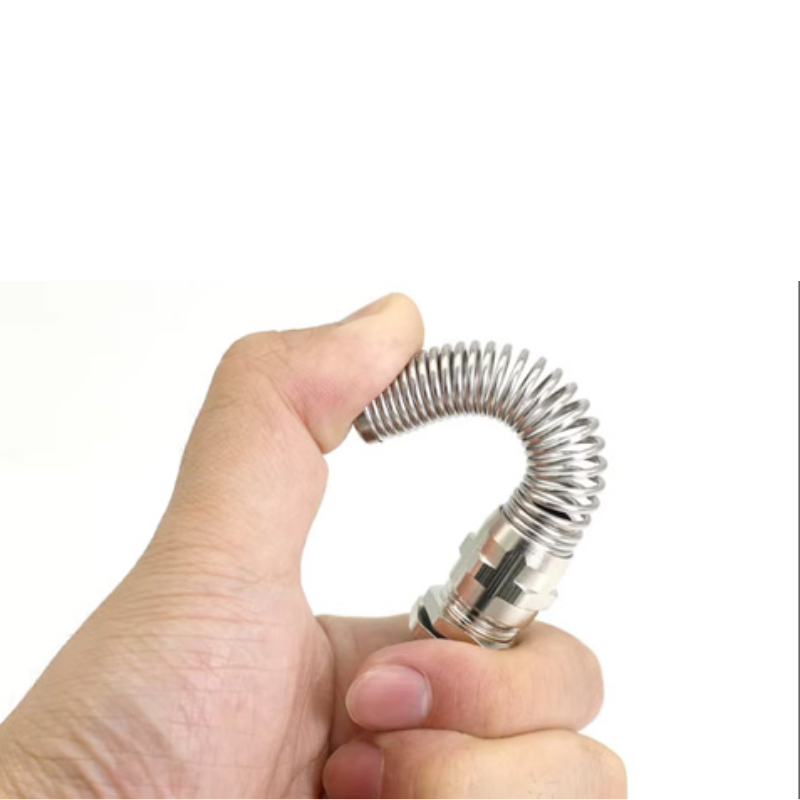Choosing the wrong cable gland for your unarmoured cables can lead to costly failures, safety hazards, and project delays. With dozens of specifications, materials, and certifications to consider, many engineers and procurement managers feel overwhelmed by the selection process.
The key to selecting the right cable gland for unarmoured cables lies in matching three critical factors: cable diameter compatibility, environmental protection requirements, and material suitability for your specific application. This comprehensive approach ensures optimal performance, longevity, and compliance with industry standards.
As someone who’s helped thousands of clients navigate these decisions over the past decade, I’ve seen how the right cable gland choice can make or break a project. Let me share the insider knowledge that will save you time, money, and headaches in your next cable installation.
Table of Contents
- What Are Cable Glands for Unarmoured Cables?
- How Do You Determine the Right Size and Thread?
- Which Materials Work Best for Different Applications?
- What Environmental Factors Should You Consider?
- How Do You Ensure Proper Installation and Performance?
- FAQs About Cable Glands for Unarmoured Cables
What Are Cable Glands for Unarmoured Cables?
Understanding the fundamentals is crucial before diving into selection criteria. Cable glands for unarmoured cables serve as the critical interface between your electrical installation and the outside world.
Cable glands for unarmoured cables are specialized sealing devices designed to provide strain relief1, environmental protection, and secure cable entry points for cables without metallic armor or braiding. Unlike their armoured counterparts, these glands focus primarily on sealing and strain relief rather than electrical continuity.
Key Functions and Benefits
Unarmoured cable glands perform several essential functions that directly impact your installation’s reliability:
Primary Functions:
- Environmental Sealing: Prevents ingress of dust, moisture, and contaminants
- Strain Relief: Protects cable from mechanical stress and pulling forces
- Cable Retention: Secures cables firmly in place to prevent withdrawal
- Thread Sealing: Creates watertight seal with enclosure or panel
I remember working with David, a procurement manager from a major automotive manufacturer in Detroit. He initially overlooked the importance of proper strain relief for his unarmoured control cables. After experiencing multiple cable failures due to vibration stress, he learned that the right cable gland selection could have prevented thousands of dollars in downtime and repairs.
Types of Unarmoured Cable Glands
The market offers various types, each optimized for specific applications:
| Type | Material | Best For | IP Rating |
|---|---|---|---|
| Nylon Cable Glands | PA66 Nylon | General purpose, cost-effective | IP682 |
| Brass Cable Glands | Nickel-plated brass | High-temperature, EMC applications | IP68 |
| Stainless Steel | 316L SS | Harsh environments, marine | IP68 |
| Plastic with Metal Thread | Nylon body, brass thread | Hybrid applications | IP68 |
How Do You Determine the Right Size and Thread?
Getting the sizing right is absolutely critical – it’s the difference between a secure, long-lasting installation and a potential failure point that could compromise your entire system.
To determine the correct cable gland size, measure your cable’s outer diameter and add 10-15% tolerance, then match this to the gland’s cable range while ensuring the thread size fits your enclosure’s entry point. This dual-sizing approach prevents both cable damage and installation issues.
Step-by-Step Sizing Process
1. Cable Diameter Measurement
- Use calipers for precise measurement
- Account for any cable sheathing or jackets
- Consider temperature expansion effects
- Add safety margin for easy installation
2. Thread Selection
- Metric Threads3: M12, M16, M20, M25, M32, M40, M50, M63
- NPT Threads: 1/2″, 3/4″, 1″, 1-1/4″, 1-1/2″, 2″
- PG Threads: PG7, PG9, PG11, PG13.5, PG16, PG21, PG29
Common Sizing Mistakes to Avoid
From my experience at Bepto, I’ve identified the most frequent sizing errors:
- Oversizing: Choosing glands too large for the cable diameter
- Thread Mismatch: Selecting wrong thread type for the enclosure
- Ignoring Cable Tolerance: Not accounting for manufacturing variations
- Temperature Effects: Overlooking thermal expansion/contraction
A client from a renewable energy company in California once ordered 500 cable glands based on nominal cable size without measuring actual diameter. The result? None of them provided proper sealing, leading to moisture ingress issues across their solar installation. We quickly resolved this with properly sized replacements and established a measurement protocol for future orders.
Which Materials Work Best for Different Applications?
Material selection directly impacts performance, longevity, and cost-effectiveness. Each material offers unique advantages that make it suitable for specific environments and applications.
For most general-purpose applications, nylon cable glands provide the best balance of performance and cost, while brass and stainless steel variants excel in high-temperature, EMC-sensitive, or corrosive environments. The key is matching material properties to your specific operating conditions.
Nylon Cable Glands – The Versatile Choice
Advantages:
- Excellent chemical resistance
- Lightweight and cost-effective
- Superior insulation properties
- Wide temperature range (-40°C to +100°C)
- Available in multiple colors for coding
Best Applications:
- Control panels and switchgear
- HVAC installations
- General industrial applications
- Food processing equipment
- Telecommunications enclosures
Brass Cable Glands – The Premium Option
Advantages:
- Superior mechanical strength
- Excellent EMC shielding4 properties
- High-temperature resistance (up to +200°C)
- Corrosion-resistant nickel plating
- Professional appearance
Best Applications:
- High-temperature environments
- EMC-sensitive installations
- Hazardous area applications
- Marine and offshore installations
- Heavy industrial equipment
Stainless Steel – The Ultimate Protection
Advantages:
- Maximum corrosion resistance
- Extreme temperature capability
- Superior mechanical properties
- Hygienic surface finish
- Long-term durability
Best Applications:
- Chemical processing plants
- Marine environments
- Food and pharmaceutical industries
- Extreme temperature applications
- Corrosive atmospheres
What Environmental Factors Should You Consider?
Environmental conditions can make or break your cable gland selection. Understanding these factors ensures your installation performs reliably throughout its intended lifespan.
The three critical environmental factors are temperature range, chemical exposure, and ingress protection requirements, with IP68 rating being the gold standard for most unarmoured cable applications. Proper environmental assessment prevents premature failures and ensures compliance with safety standards.
Temperature Considerations
Temperature affects both material properties and sealing performance:
Operating Temperature Ranges:
- Nylon: -40°C to +100°C (standard), up to +120°C (special grades)
- Brass: -50°C to +200°C
- Stainless Steel: -60°C to +300°C
Chemical Compatibility
Hassan, a facility manager at a petrochemical plant in Saudi Arabia, learned this lesson the hard way. His initial nylon cable gland selection failed within months due to hydrocarbon exposure. We replaced them with specially formulated chemical-resistant nylon glands that have now been performing flawlessly for over three years.
Chemical Resistance Guide:
- Acids: Stainless steel preferred, special nylon grades available
- Alkalis: Nylon and stainless steel both suitable
- Hydrocarbons5: Special nylon compounds or brass with appropriate seals
- Solvents: Material-specific testing required
IP Protection Ratings
Understanding IP ratings ensures adequate protection:
| IP Rating | Dust Protection | Water Protection | Typical Applications |
|---|---|---|---|
| IP54 | Limited dust | Splash resistant | Indoor control panels |
| IP65 | Dust tight | Water jet resistant | Outdoor installations |
| IP66 | Dust tight | Powerful water jets | Wash-down areas |
| IP68 | Dust tight | Continuous immersion | Underground/marine |
How Do You Ensure Proper Installation and Performance?
Even the best cable gland can fail if improperly installed. Following proven installation practices and maintenance procedures ensures optimal performance and longevity.
Proper installation requires correct torque application, adequate thread engagement, and proper seal compression, with regular inspection schedules to maintain long-term performance. These practices prevent the majority of field failures we encounter.
Installation Best Practices
Pre-Installation Checklist:
- Verify gland compatibility with cable and enclosure
- Inspect threads for damage or contamination
- Check seal integrity and proper positioning
- Ensure adequate cable preparation
Installation Steps:
- Thread Preparation: Clean and inspect all threaded surfaces
- Seal Application: Apply thread sealant if required by specification
- Initial Assembly: Hand-tighten to ensure proper thread engagement
- Torque Application: Use calibrated tools to achieve specified torque
- Final Inspection: Verify seal compression and cable retention
Maintenance and Inspection
Regular maintenance extends service life and prevents unexpected failures:
Inspection Schedule:
- Monthly: Visual inspection for obvious damage or loosening
- Quarterly: Torque verification and seal condition check
- Annually: Complete disassembly and component replacement if needed
Warning Signs:
- Visible seal deterioration or cracking
- Loose cable retention
- Corrosion on metal components
- Moisture ingress evidence
Conclusion
Selecting the right cable gland for unarmoured cables doesn’t have to be overwhelming when you follow a systematic approach. Focus on the three pillars: proper sizing based on actual cable measurements, material selection matched to environmental conditions, and adherence to proven installation practices. Remember that investing in quality cable glands from certified manufacturers like Bepto pays dividends through reduced maintenance, improved reliability, and enhanced safety. Take the time to assess your specific requirements thoroughly – your future self will thank you for making the right choice today! 😉
FAQs About Cable Glands for Unarmoured Cables
Q: What’s the difference between cable glands for armoured and unarmoured cables?
A: Cable glands for unarmoured cables focus on sealing and strain relief, while armoured cable glands additionally provide electrical continuity and grounding for the cable’s metallic armor. Unarmoured versions typically have simpler internal construction and don’t include earthing components.
Q: How do I know if my cable gland provides adequate strain relief?
A: Proper strain relief is achieved when the gland grips the cable jacket firmly without crushing it, and the cable cannot be withdrawn with reasonable pulling force. The cable should show no movement when subjected to typical installation stresses, and the bend radius at the gland entry should meet cable manufacturer specifications.
Q: Can I use the same cable gland for different cable types?
A: Yes, if the cable outer diameters fall within the gland’s specified range and the environmental requirements match. However, ensure that cable jacket materials are compatible with the gland’s sealing elements, and verify that the strain relief mechanism works effectively with your specific cable construction.
Q: What IP rating do I need for outdoor installations?
A: For outdoor installations, IP65 is the minimum recommended rating, providing protection against dust and water jets. However, IP68 is preferred for applications involving potential flooding, underground installation, or continuous moisture exposure, as it offers protection against prolonged immersion.
Q: How often should I replace cable gland seals?
A: Seal replacement frequency depends on environmental conditions and material type. In normal indoor conditions, quality seals can last 10-15 years. However, in harsh environments with temperature cycling, chemical exposure, or UV radiation, annual inspection and replacement every 3-5 years may be necessary to maintain optimal performance.
-
Learn the engineering principle behind strain relief and why it’s crucial for cable longevity. ↩
-
See the official definition of the IP68 rating according to the IEC 60529 standard. ↩
-
Explore the international standard for metric screw threads, including dimensions and tolerances. ↩
-
Understand the principles of Electromagnetic Compatibility (EMC) shielding and how it prevents interference. ↩
-
Learn about the chemical properties of hydrocarbons and their effects on different materials. ↩




